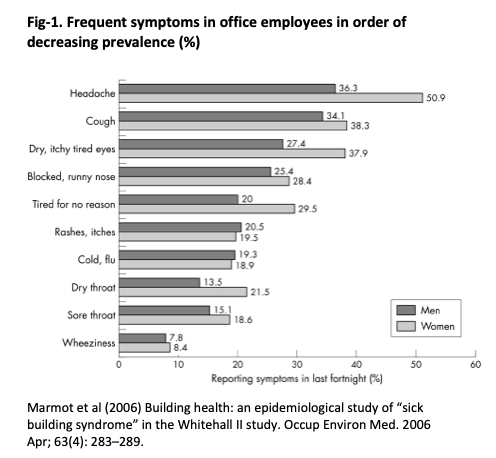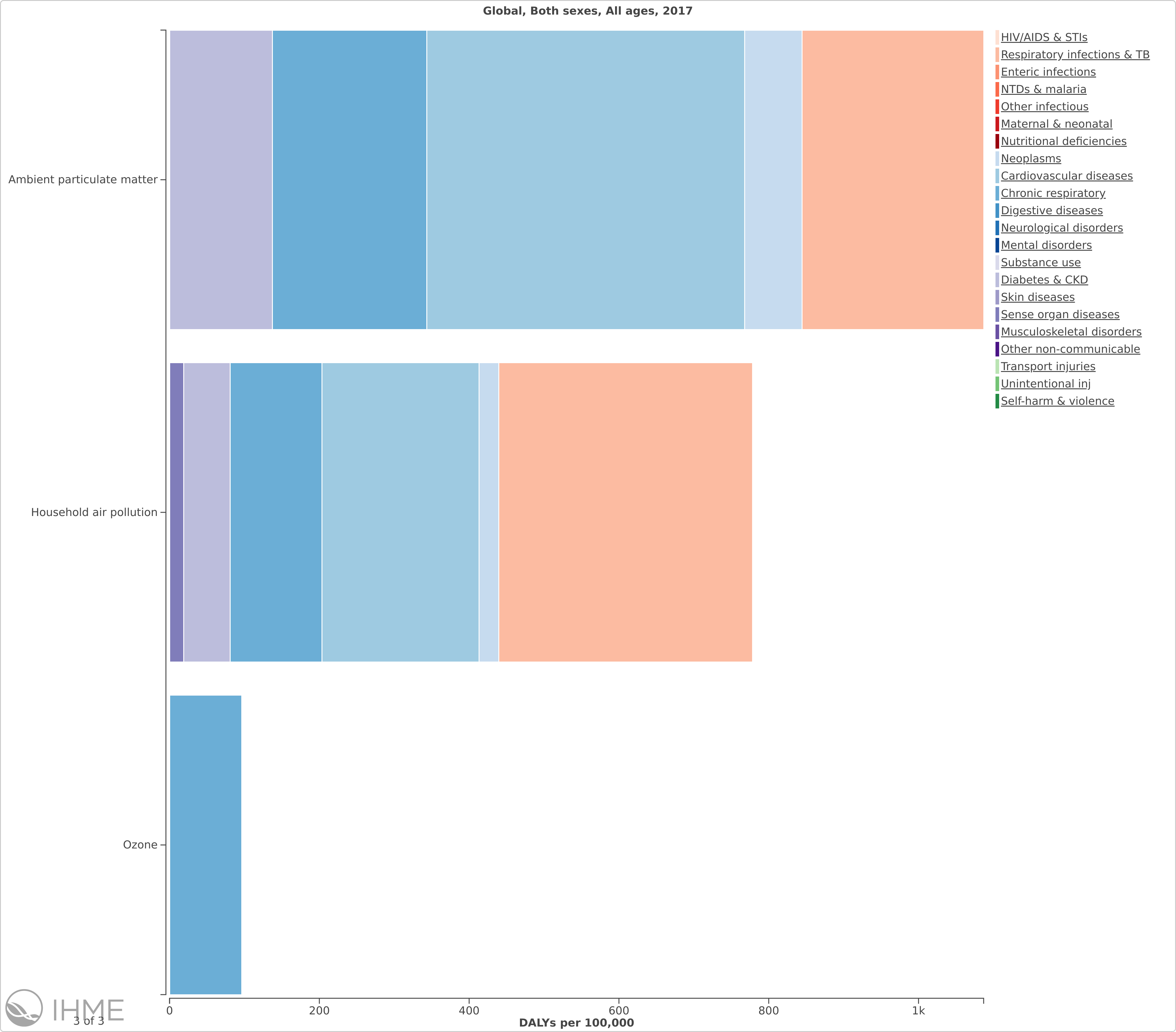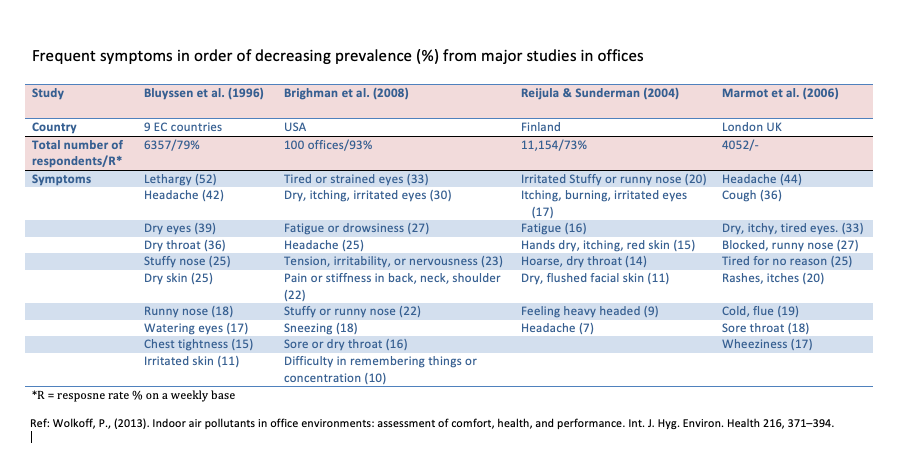Air Pollution Facts

Air pollutants
Atmospheric air pollution constitutes an important public health hazard particularly in densely populated urban centers with high traffic. The main precursor substances in the air are particulate matter (PM) of sizes up to 10 microns (PM10) and up to 2.5 microns (PM2.5), black carbon, carbon monoxide (CO), sulfur dioxide (SO2) and nitrogen oxides (NO, NΟ2). Secondary pollutants are produced in the atmosphere as a result of complex physicochemical reactions, the most important of which is ozone (O3) and higher nitrogen oxides (NOx) together known as photochemical smog.
Indoor air quality is influenced both from external air pollutants that penetrate in the building but also from internal sources. Several volatile compounds such as formaldehyde or other VOCs are emitted by building materials, paints, furniture, and cleaning products [8, 9].
Carbon monoxide, PMs and black carbon can be produced from internal sources, i.e. burning of oil or solid fuels, whereas humidity and bad ventilation may produce molds, microorganism growths and release of toxic gases. Under the protective enclosure of the building envelope, pollutants mix and interact or grow (when considering microbes). For permissible standards and recommendations for indoor air quality see Table 1.

The Sick Building Syndrome
Sick building syndrome (SBS) refers to a complex situation where people working or residing in a modern building experience several non-specific symptoms as a result to the presense of indoor air pollutants. As shown in Fig-1, typical symptoms are headaches, fatigue, irritated and itchy eyes, runny nose, sore throats, rashes, etc. Symptoms are associated with a person’s presence in the building and disappear shortly after they leave the building .
Table 2 compiles the results of several health occupational studies conducted in various parts of the world that show the prevalence of sick building syndrome. In some cases up to 50% of office occupants experience one or more symptoms, during their stay in a sick building .
SBS has also potentially problematic socio- economic consequences because it is the cause of an extensive loss of productivity, sickness absenteeism, wasted time in complaints and all the legal punitive issues that arise from them.

Carbon Dioxide
Carbon dioxide in room temperature is a colorless and odorless gas with a slight sour taste. It is a product of combustion but also of human metabolism and for this reason it can be used as an index of indoor air quality in working environments. Moderately high concentrations can induce headaches and fatigue, while high concentrations may cause nausea, dizziness and vomiting.
Carbon dioxide levels are used to calculate comfort indexes in the building using Siba's embedded software capabilities.
Characteristic levels of CO2 and their symptoms are shown in table 3.

Cost effects of SBS
“Sick” building label applies to many modern buildings that have mechanical ventilation, inadequate flooring and deficient or absent maintenance, inappropriate interior furniture or finishing. Achieving a reputation of a “sick building” may prove difficult to rehabilitate even after expensive repairs and upgrades.
In the USA only, for example, the economic consequences of SBS are estimated at 10 to 70 billion USD for commercial buildings. This involves costs for medical care, compensation for 150 million working days and loss of productivity. In the Education sector alone it costs the US economy over 6 billion a year affecting 64 million teachers; on the other hand, the cost from doubling ventilation rates in schools amounts to only 40$ per student.

Energy considerations
Optimal energy use is the key for sustainable building operation and hence there is a need for the correct combination of energy–efficient building designs, energy saving technologies, informed behavioural choices, and optimisation based on local climatic conditions that can lead to substantial reductions in energy consumption.
Whilst newly constructed commercial buildings can offer considerable energy efficiency improvements, about 60% of the buildings that will be standing in 2050 have already been built.
Several research studies have attempted to address the issues of energy management, but adequate answers to many of the relevant questions are still unavailable.
EU legislation, mandates energy savings of up to 70% in European buildings through smart infrastructure and by managing Technical Building Systems operations (BEMS) such as mechanical ventilation, shading and lightning.

Health effects
There is now an undisputable epidemiological evidence that exposure to air pollutants may cause death or disabilities due mainly to cardiovascular and respiratory diseases. The three air pollution risk factors for which a cause / resposnse relationship has been proven are: particulate matter in ambient air, particulate matter from fuel combustion in indoor air and ozone in ambient air.
Exposure to particulate matter in ambient air has proven to be the sixth most important risk factor of disease globally and is responsible for 2.9 million premature deaths per year in 2017, whereas additional 471,8 K deaths are attributed to ozone in ambient air.
Indoor air is 2 to 5 and in some cases 100 times more polluted than outdoor air and is responsible for an additional 1.64 million deaths per year. According to Global Health Data Exchange (GHDE), the risk to health by particulate matter in ambient air is constantly increasing, the risk from ozone remains constant and the risk from PMs in indoor air is decreasing due to restriction in burning solid fuels indoors.

DALYs
Figure shows the global burden of disease , according to the GHDE (2017), caused by the three major air pollution risk factors, broken down into main causes of disease by order of magnitude: Cardiovascular, Respiratory infections and tuberculosis, Chronic Respiratory disease, Diabetes and kidney diseases, Neoplasms and sense organ diseases only for indoor air pollution.
The burden of disease is expressed in DALYs (Disability-Adjusted Life Years) per 100.000 inhabitants. DALYs are the sum of two parameters: years of life lost due to premature death (YLLs) and years of life lived in disability (YLDs).
DALYs constitute an absolute measure of health level in a population and they reflect the number of people who have suffered illness or have died prematurely per gender, age, and place of residense attributed to a specific risk factor and a cause of disease.
Global Burden of Disease Collaborative Network (GHDE)
